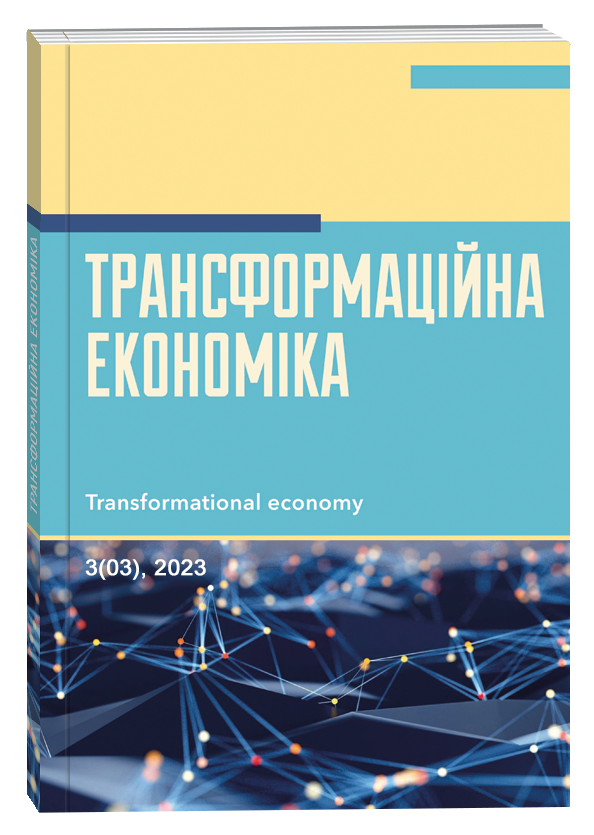GROUP DYNAMICS AND METHODS OF MANAGING CREATIVE AND PROJECT TEAMS IN THE FIELD OF INFORMATION TECHNOLOGY
Abstract
This article provides a comprehensive analysis of group dynamics in project teams and creative groups. It explores various aspects of group dynamics, including interaction, communication, conflict, cooperation, coordination, and other factors that arise during collaborative activities. The article also categorizes models of team development, considering different communication and cooperation styles, along with techniques for fostering team cohesion and appropriate behavior at different stages of collaboration. By shedding light on group dynamics, the article emphasizes the significance of effective team management in achieving set objectives. It underscores the importance of adapting team management methods to suit specific project requirements and the business environment by highlighting different aspects of group dynamics and presenting diverse models of team development. The article stresses the value of studying and utilizing contemporary models of interaction, communication, and conflict management to enhance overall team performance. Furthermore, the article highlights the critical role of efficient team management in the success of project teams and creative groups. It argues that creative team leaders and project managers should employ effective team management methods tailored to the project's unique needs and the nature of the business environment. These methods may encompass diverse models of interaction, cooperation, knowledge sharing, team cohesion, leadership, communication, and conflict management. The article establishes that project teams and creative groups can achieve their goals through effective teamwork when these aspects are considered. Additionally, the article clarifies the essence of various models that define team member roles, leadership styles, types of interaction, and conflicts between team members. It emphasizes the significance of studying and utilizing modern models of interaction, communication, and conflict management to comprehend the roles played by project team members and their impact on overall team performance. Moreover, the article underscores the importance of recognizing the uniqueness of each team member and their individual characteristics. Understanding the specifics of the business environment and the needs of a particular team is crucial for effective team management. The article proposes to use the Team Building Methodology, which is based on the idea that in order to achieve maximum results in project work, harmonious work of all team members is necessary, as well as on the idea of a team as a house.
References
Belbin R.M. (2010) Management Teams: Why They Succeed or Fail (3nd ed.). London: Routledge. р. 204. DOI: https://doi.org/10.4324/9780080963594 (accessed 12.03.2023).
Hackman J.R. (2002) Leading Teams: Setting the Stage for Great Performances. Harvard Business School Press. Boston: Harvard Business School Press. 336 р. URL: https://scholar.harvard.edu/rhackman/publications/leading-teams-setting-stage-great-performances (accessed 12.03.2023).
Данченко О.Б., Бедрій Д.І., Семко І.Б. Управління конфліктами наукового проєкту. Вісник Національного технічного університету «ХПІ». 2019. № 2 (1327). С. 28–35.
Katzenbach J.R. & Smith D.K. (1993) The Wisdom of Teams: Creating the High-Performance Organization. HarperCollins Publishers. р. 291
Kozlowski S.W.J. & Ilgen D.R. (2018) Enhancing the effectiveness of work groups and teams. Psychological Science in the Public Interest, No. 19(3), Рp. 77–124.
Осичка О.В., Чернега О.М. Особливості управління конфліктами в проєктній команді. Науковий вісник Одеського національного економічного університету. 2017. № 5, С. 152–171. URL: http://n-visnik.oneu.edu.ua/collections/2017/247/page.php?id=abstract/ukr/152-171 (дата звернення 30.03.2023).
Ющишина Л. О. Групова динаміка та комунікації (тренінг): курс лекцій. Луцьк : Волинський національний університет імені Лесі Українки, 2022. 170 с.
Tuckman B.W. (1965) Developmental sequence in small groups. Psychological Bulletin, No 63 (6), рр. 384–399.
Belbin R.M. (2010) Management Teams: Why They Succeed or Fail (3nd ed.). London. Routledge. р. 204. DOI: https://doi.org/10.4324/9780080963594 (accessed 12.03.2023). [in English]
Hackman J.R. (2002) Leading Teams: Setting the Stage for Great Performances. Harvard Business School Press. Boston: Harvard Business School Press. 336 р. URL: https://scholar.harvard.edu/rhackman/publications/leading-teams-setting-stage-great-performances (accessed 12.01.2023). [in English]
Danchenko O.B., Bedriy D.I., Semko I.B. (2019) Upravlinnya konfliktamy naukovoho proektu [Management of scientific project conflicts.]. Visnyk Natsionalʹnoho tekhnichnoho universytetu «KhPI». No. 2 (1327), pp. 28–35.
Katzenbach J.R. & Smith D.K. (1993) The Wisdom of Teams: Creating the High-Performance Organization. HarperCollinsPublishers. р. 291. [in English]
Kozlowski S.W.J. & Ilgen D.R. (2018) Enhancing the effectiveness of work groups and teams. Psychological Science in the Public Interest, No. 19(3), Рp. 77–124. [in English]
Osychka O.V, Cherneha O.M. (2017) Osoblyvosti upravlinnya konfliktamy v proektniy komandi [Peculiarities of conflict management in the project team]. Naukovyy visnyk Odesʹkoho natsionalʹnoho ekonomichnoho universytetu. No. 5, pp. 152–171.
Yushchyshyna L.O. Hrupova dynamika ta komunikatsiyi (treninh): [Group dynamics and communications (training)]: kurs lektsiy. Lutsk: Volynsʹkyy natsionalnyy universytet imeni Lesi Ukrayinky. 170 р.
Tuckman B.W. (1965) Developmental sequence in small groups. Psychological Bulletin, No. 63(6), рр. 384–399. [in English]


